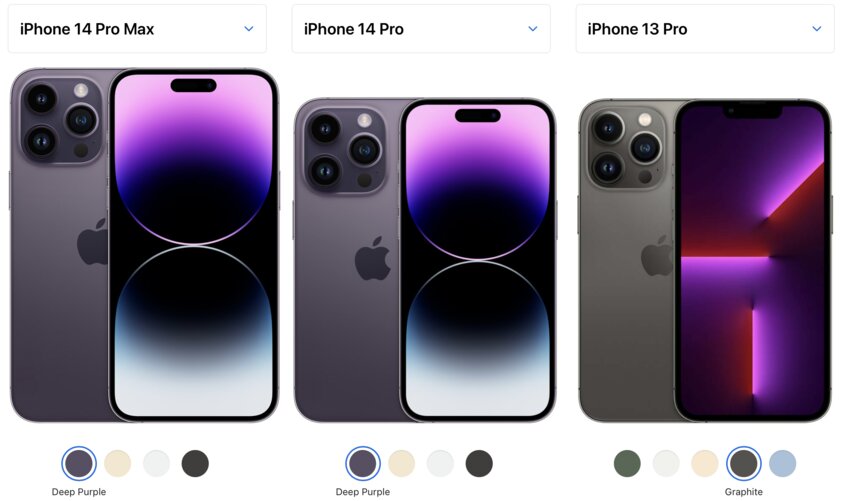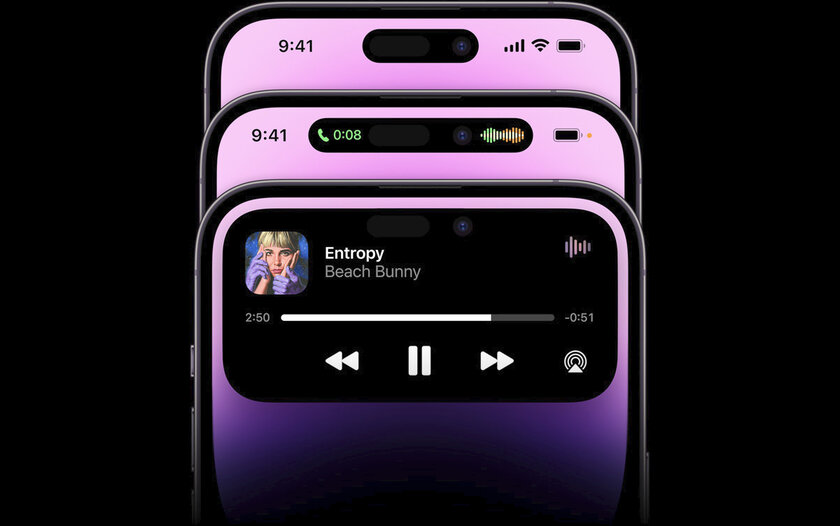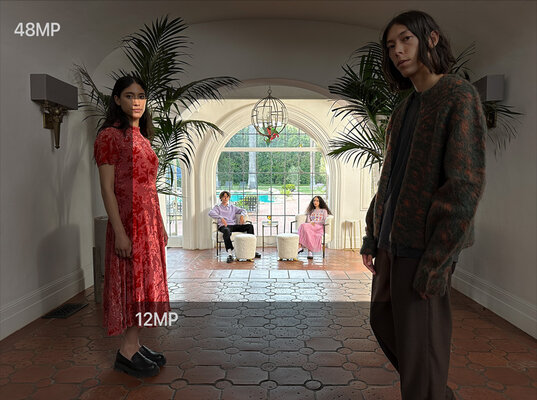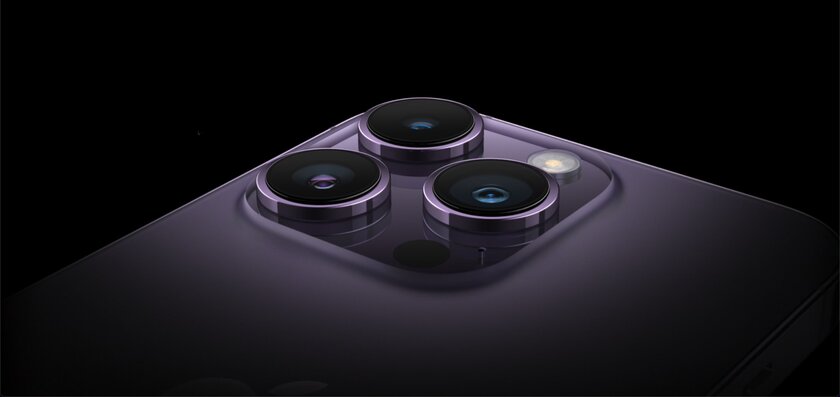Each year, Apple introduces new models of the main iPhone series, which include both small changes and tangible big innovations. This time it didn’t break the tradition, the new iPhone 14 and 14 Plus, as well as the iPhone 14 Pro and 14 Pro Max, delight and upset innovations at the same time. On the one hand, there are not so many of them. On the other hand, they are quite interesting.
How iPhone 14 and 14 Plus differ from iPhone 13 and 13 mini
Apple abandoned the mini-model, presenting instead the completely opposite – the Plus-version. It differs from the regular iPhone 14 only in a larger display and related specifications, so the main comparison below will be between the iPhone 14 and iPhone 13 (information about the Plus model will be only where it differs).
Design
Apart from the appearance of some new colors (as well as the disappearance of certain old ones), outwardly both generations of the iPhone are completely identical – Apple has not changed either the design of the camera block or the size of the “bangs”.
The same applies to the iPhone 14 Plus, but it = is similar in size to the iPhone 13 Pro Max.
Performance
The media inflated the news with might and main that the iPhone 14 uses last year’s processor. This is true, but only partial. The new products really have the A15 Bionic installed, but in an improved version with 5 graphics cores (and not 4) – in other words, the same processor as in the iPhone 13 Pro and 13 Pro Max. The extra core should also be useful in games, the graphics should be 25% faster.
cameras
The iPhone 14 still uses a combination of two rear cameras, regular and wide-angle. The main one was slightly changed, making it more aperture (f / 1.5 vs. f / 1.6) – coupled with larger pixels, the matrix should capture up to 49% more light at night. The optics of the front camera has also been updated, its aperture is f / 1.9 (against f / 2.2) – 38% more light. However, the main change turned out to be programmatic. All three cameras received support for the Photonic Engine neural network, which significantly improves photos in medium and low light.
Apple says the new technology is capable of making shots up to 2x brighter with the wide-angle and front-facing cameras, and up to 2.5x brighter with the rear camera.

There’s also an Action mode for recording smoother video, even when there’s motion and external vibration.
Separately, it is worth noting the appearance of autofocus in the front camera.
Among the minor innovations, one can single out a 10% increase in flash brightness, as well as the function of recording video in cinematic mode in 4K HDR at 30 fps (versus 1080p at 30 fps).
autonomy
Apple traditionally does not disclose battery capacity in its smartphones, but calls the maximum autonomy for video playback (and in other scenarios): 20 hours for the iPhone 14 versus 19 hours for the iPhone 13. In the iPhone 14 Plus, this figure is 26 hours.
Sensors and chips
The iPhone 14 and 14 Plus use an improved gyroscope and accelerometer, largely due to which the new items have learned to determine if the user is in a car accident. We also improved the light sensor, it became double.
Bluetooth is now version 5.3 (against 5.0), while the supported Wi-Fi standard remains the same – 802.11ax.
It is worth noting that American modifications have lost support for physical SIM cards, now only electronic eSIMs are in smartphones for the United States.
How iPhone 14 Pro and 14 Pro Max differ from iPhone 13 Pro and 13 Pro Max
The key changes between the new and old Pro models lie in the filling – according to Apple, the improvements in some areas are multiple. Most of the innovations went to the cameras, while other characteristics have not changed relatively (with the exception of the usual improvement in the processor). The iPhone 14 Pro differs from the 14 Pro Max only in a larger display and related features.
Design
Apart from the colors, the only change lies in the dotted cutout in the display – instead of the “bangs” the “tablet” is used. It has become smaller than the previous solution and is used not only for the recognition of new models, but also for the sake of interactivity in the interface.

The new cutout in the display is called a “dynamic island” and is played with in every possible way by the operating system: for example, it is from it that a notification of an incoming call comes out, and when playing music, this “pill” expands and accommodates the cover of the song and the playback status – such interactions with the “dynamic island” » in the system is complete, they are also available to third-party developers.

Display
The new products use displays of the same size, but they themselves have improved. The screens have learned the Always-On mode (widgets on the locked screen), which is updated once a second thanks to a frequency of 1 Hz, and become brighter: the typical value is preserved, but 1,600 nits are available to the HDR mode (against 1,200 nits), and auto-brightness is capable of reach an all-time 2,000 nits.
Performance
Unlike the iPhone 14 and 14 Plus, which received last year’s A15 processor, the new A16 Bionic is used here. However, Apple hasn’t disclosed performance changes much, so it’s hardly worth counting on too much gain in the same games. The new chipset has the same layout: 6 CPU cores (2+4), 5 GPU cores and 16 neural processor cores. Frequencies are not disclosed, but at least the cores of the processor are faster.
cameras
The main innovations lie here. The main camera for the first time in the history of the iPhone received a resolution of 48 megapixels (against 12 megapixels). The aperture of the lens has decreased (f / 1.78 vs. f / 1.5), but the camera is able to capture up to 2 times more light (largely due to the quad-pixel matrix). The sensor itself has increased by 65% compared to that of the iPhone 13 Pro. The quality of the 48-megapixel image is so good that Apple built a separate 2x zoom button into the camera app to crop the original image and produce a quality comparable to optical zoom.


With wide-angle shooting, the same story: the aperture is smaller (f / 2.2 vs. f / 1.8), but in low light conditions it does three times better.
According to Apple, the telephoto camera photographs much better than its predecessors, despite maintaining aperture and resolution. At night, she began to shoot twice as well. The optical zoom is still 3x.

The front camera has also been improved. It’s still 12-megapixel, but with an aperture of f/1.9 (instead of f/2.2) – thanks in large part to this, it copes with night shooting up to two times better. In addition, she acquired autofocus.
It is also worth noting that the cameras received support for the Photonic Engine, a neural network that is used in medium and poor lighting conditions. All of the above improvements in the case of night shots are largely due to this technology.
autonomy
The capacity of the batteries is unknown, but the operating time without recharging under certain scenarios is disclosed. New items work about the same as their predecessors.
Sensors and chips
The iPhone 14 and 14 Plus use an improved gyroscope and accelerometer, largely due to which the new items have learned to determine if the user is in a car accident. We also improved the light sensor, it became double.
Bluetooth is now version 5.3 (against 5.0), while the supported Wi-Fi standard remains the same – 802.11ax.
It is worth noting that American modifications have lost support for physical SIM cards, now only electronic eSIMs are in smartphones for the United States.
Source: Trash Box
Johanna Foster is an expert opinion writer with over 7 years of experience. She has a reputation for delivering insightful and thought-provoking articles on a variety of subjects. Her work can be found on some of the top online news websites, and she is currently lending her voice to the world stock market.






